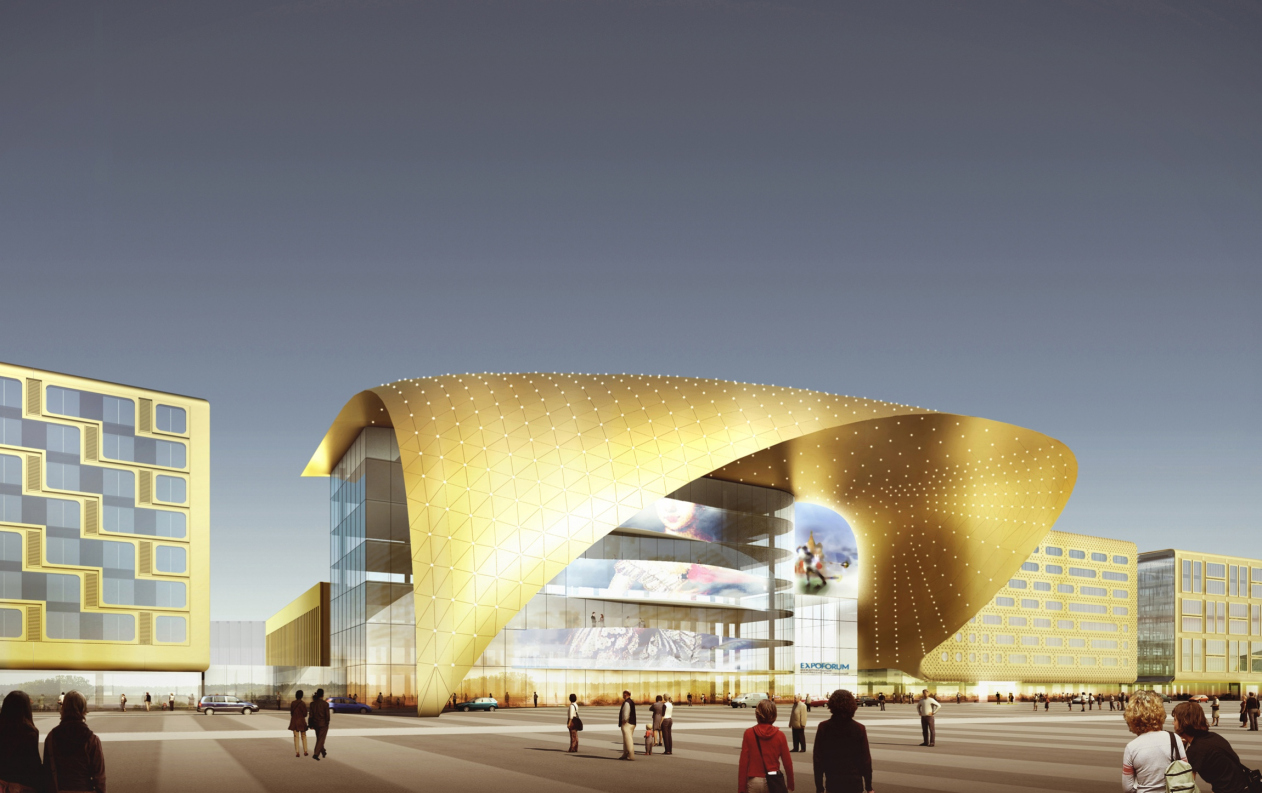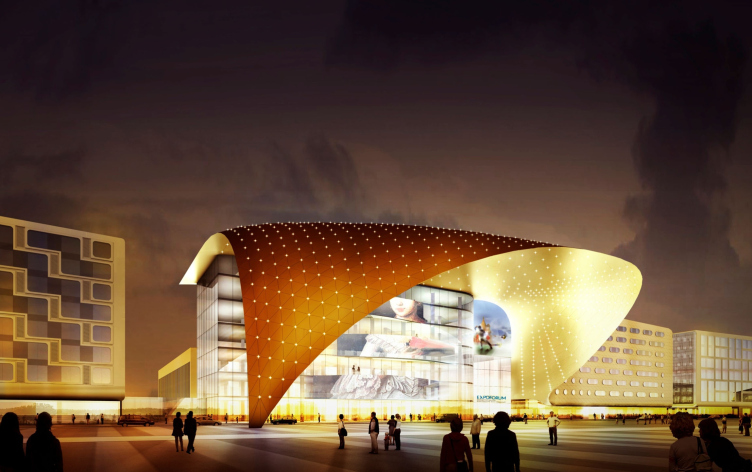The story of construction of a grand-scale expo complex in the city of
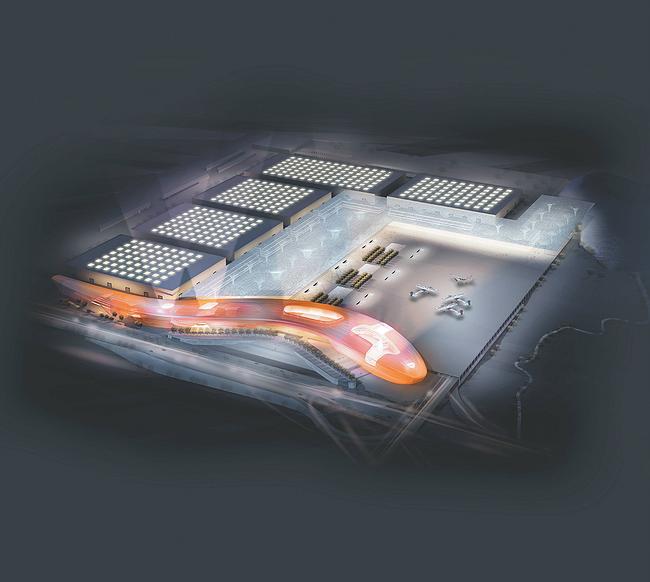
The changes affected not only the architectural image of the future
exhibition center but also the provisions of the master plan. At this point we
will remind you that the complex will be built in the Pushkinsky district of
Saint Petersburg, on the ground of the former "Shushary" state-owned
farm: located a ten minutes' drive away from the "Pulkovo" airport,
this site borders on the
First of all, the transport infrastructure of the future
"Expoforum" was more carefully thought out. While originally the
architects placed the pavilions and the congress center on the land site of a
square shape one of the edges of which in fact "barged into" the
shore area of the lake causing legitimate questions, now the site took on a
shape of a smoothed-out trapeze with its edges fringed by automobile roads. The
territory of the exhibition center is accessible by two fully-fledged driveways
- from the southeast and the northern sides of the land site, the northern
crossing with the Peterburgskoe Highway being more developed and presenting a
grand-scale flyover, because on this side the exit from the main two-level
parking garage is situated. The architects also provided for a traffic circle
on the rear side of the complex - it will help to separate more efficiently the
traffic flows that are headed to different halls of "Expoforum".

Location plan
The composition of the complex itself also changed beyond recognition.
In the original version of the project, the public and recreation space
occupied as much as a third of the entire site - in fact, the whole roof of the
underground parking garage was treated as an open-air venue for public events
or even for exhibiting airplanes and heavy machinery. Upon a closer look at
this idea, however, the architects admitted that the climate of Saint
Petersburg is not exactly conductive for organizing frequent auto or aviation
trade fairs, and this is why the land site is now filled with buildings almost
completely: instead of a giant windswept "marching ground" there
appears a system of wind-protected squares, courtyards, and little streets. The
function of the centerpiece of the composition is still performed by the
covered pedestrian passage; now, however, the buildings of the exhibition
center are evenly spaced on its either sides, so on the layout
"Expoforum" looks like a tree pictogram with branches shooting off
its trunk.
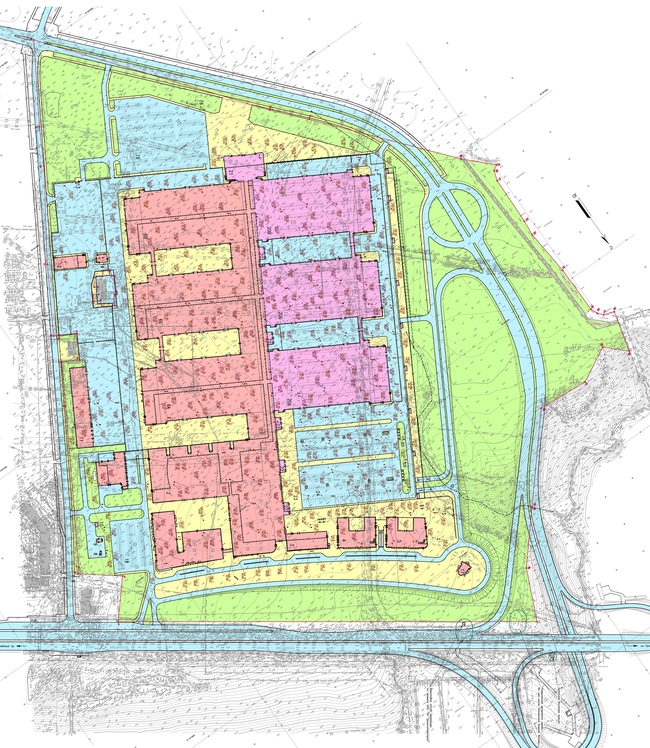
New master plan
As far as the functions are concerned, no significant changes were made
to the project. As earlier, "Expoforum" includes the expo, congress,
and business centers, 3 and 4-star hotels, as well as a freight forwarding unit
and the engineering infrastructure facilities without which launching such a
massive organism into operation would have been impossible. The congress
center, the hotels, and the two business centers are joined together and placed
in the front housing line - one can say that these are the magnificent upper
branches of that "tree" and the main facade of the entire
"Expoforum", its "face" that will welcome the visitors
coming down the
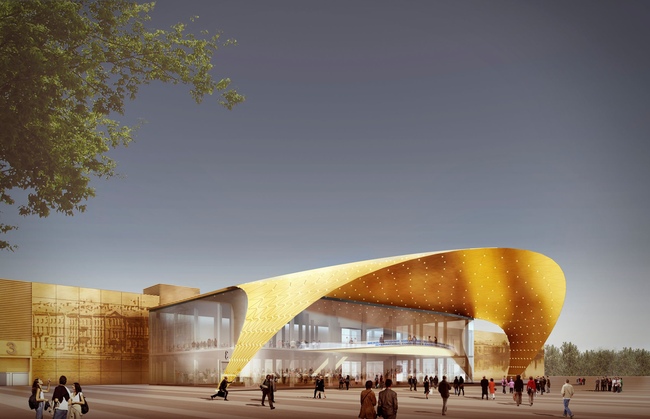
And, while originally this facade was facing the highway with rainbow
colors, now the complex is designed in an entirely different way. While the
golden casing is still there, the architects change it from a uniform coating
into a net with cells of different sizes. Interesting is the fact that this is
not rigid orthogonal grid - each cell sports rounded, as if melted, corners (at
one of the facades they even turn into windows of a completely round shape),
which serves to soften the rigid geometry of the buildings and makes them look
very much like the good old punch cards. The theme found by the architects is
both winsome and unobtrusive; it is more than appropriate in the buildings
meant to showcase the achievements in the field of high-tech solutions.

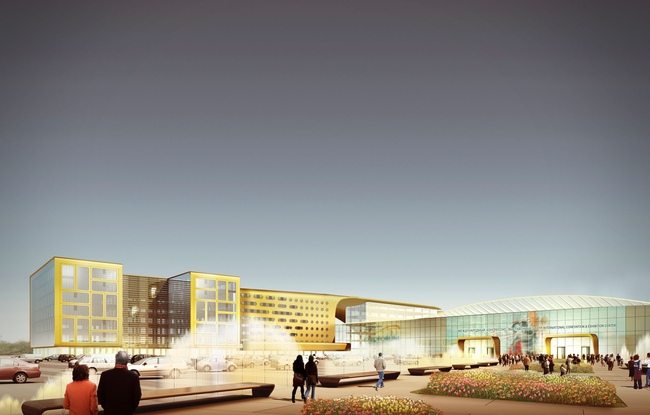
The arch also survived into the new project, although, while it was a
pass-through one and served the function of the entrance gate to the territory
of "Expoforum", now the characteristic parabolic shape was given to
the marquee of the north entrance. It is perceived as a golden sail whose edges
are drawn down to the ground, and the main canvas is spread out by the gusts of

For the other facade, the architects also chose the golden amber color.
According to Eugene Gerasimov, there were several reasons for the monochrome
solution. First of all, the architects needed a more reserved tone, one that
would "pull" together the composition of various volumes, and at the
same time one that would not leave a "mottled" or
"overcrowded" impression. Second of all, this very tone was the perfect
choice for adding some "flavor" of




